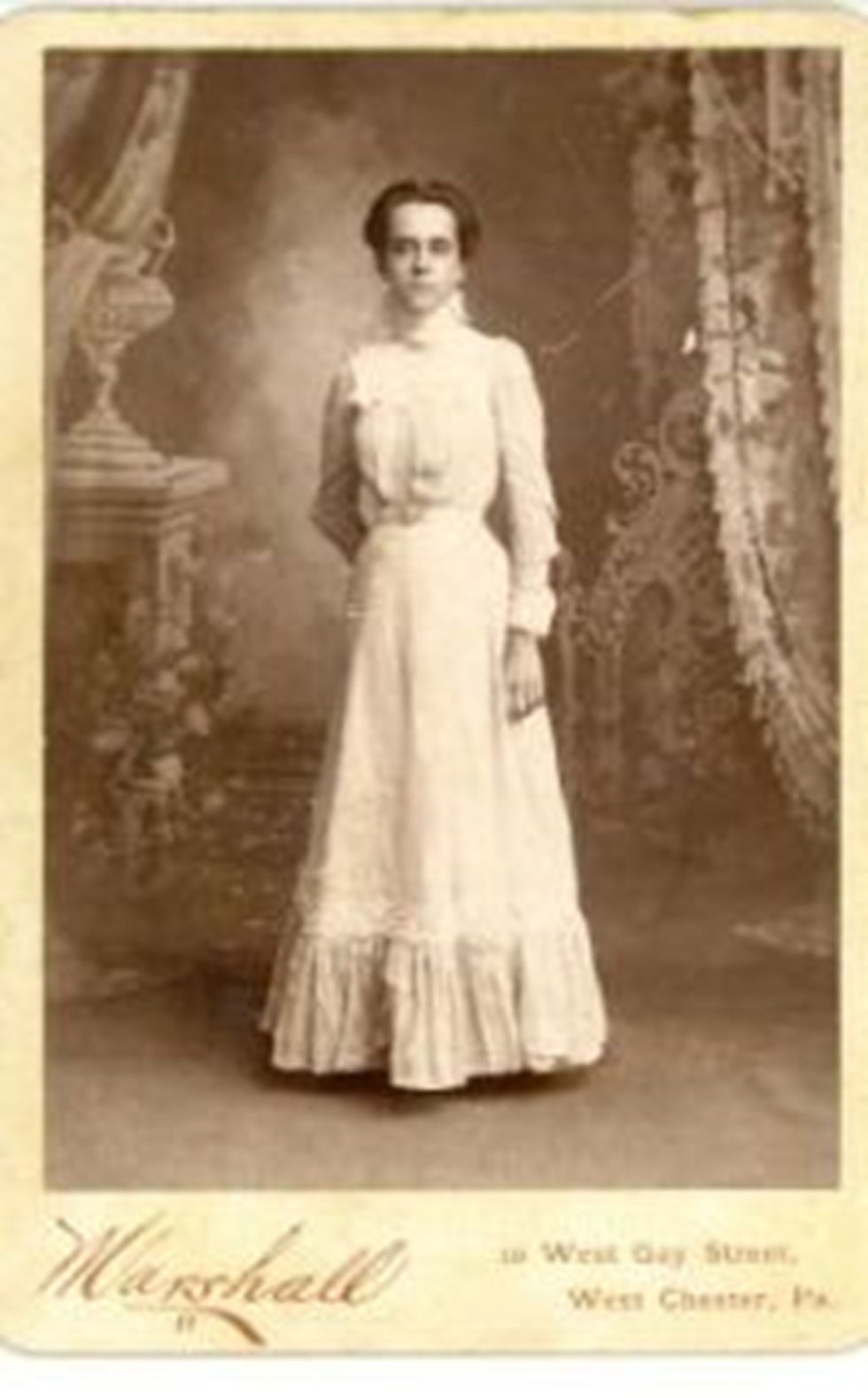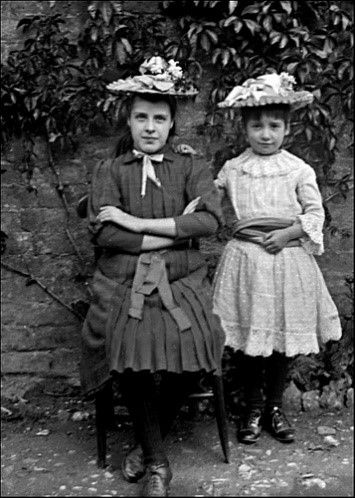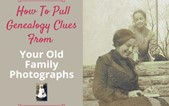
I have a whole box of old family photographs that were passed on to me by family members who think that I am the “family historian.” And they would be right since none of them have shown much interest in it. But just wait…one day they will be interested, and my time spent identifying the ancestors in our family will all be worth it. Maybe you have a collection of antique and vintage photographs or perhaps you are the designated family historian. Here are some ideas to help you!
We are a participant in the Amazon Services LLC Associates Program, an affiliate advertising program designed to provide a means for us to earn fees by linking to Amazon.com and affiliated sites. When you purchase through a link to an Amazon affiliate link placed on our website, we may receive a small commission at no additional cost to you.
Let’s start by defining what a family photograph collection actually is.
A family photograph collection is more than a random assortment of images – each picture is a time capsule that documents a moment from the lives of our ancestors. The collection may contain formal portraits, snapshots of vacations, relatives gathered for special events, friends, and pets. These photos show you what was important to your ancestors. Each image is full of information, but a collection of photographs arranged and identified can tell the story of a lifetime or the history of a family.

Here is one example of a photo mystery that I solved in my family (p.s. did I say that I love being a genealogy detective?).
This family photo that came to me by way of my mother was a bit of a mystery for a long time. It depicts two small children and their hound dog posing against a rather austere landscape background.
My first thought, and one I held for a long time, was that the young boy was my maternal grandfather and the girl was perhaps one of his cousins as he was an only child, (which was rare for 120 years ago) but after looking at other family photos from my mother's side of the family and comparing facial features and characteristics, namely the young girl's eyes, (mouth and face shape, as well as factoring in the type of photograph this is), I came to the conclusion that this is an image of my great-grandmother Elsie (more about Elsie in another blog post, she was quite an interesting person!) and probably her younger brother, Frederick, due to the ages of the children. Since I know that she was born in 1880, had at least 6 siblings, and was born in a rural area of northeastern Pennsylvania, the image is mostly likely of her. The children have similar facial features and since I know that my grandfather was an only child, the boy probably is not him. The clothing and the hairstyles of both children date to the latter years of the 1880s.
By using the above clues and the techniques listed below, I concluded that this photograph was probably taken between 1886-1888.
Now I can add the photo to the correct place in my family history and photo albums.
There are five steps that should be taken when identifying old family photographs.
Here they are:

1. Identify the Type of Photograph. Not all old photographs are created alike. By identifying the type of photographic technique used to create your old family photos, it is possible to narrow down the time period when the photograph was taken. Daguerreotypes, for example, were popular from 1839 to about 1870, while cabinet cards were in use from about 1866 to 1906. By studying the types of photographs and the years in which they were popular you may narrow down the time period for your photograph.
Antique Daguerreotype
2. Who Was the Photographer?

Check both the front and the back of the photograph (and its case if it has one) for a photographer’s name or imprint. If you are lucky, the photographer’s imprint will also list the location of his studio. Check local directories for the area (found in libraries) or ask the members of local historical or genealogical society to determine the time period the photographer was in business. You may also be able to find a published directory of photographers working in your specific region, such as Directory of Pennsylvania Photographers, 1839-1900 by Linda A. Ries and Jay W. Ruby (Pennsylvania Historical and Museum Commission, 1999) or this online list Early St. Louis Photographers maintained by David A. Lossos. There are also many websites with directories of photographers that were in business one hundred years ago or more. Some photographers were only in business for a few years, so this information may help you really narrow down the time period when a photograph was taken. Sometimes the photograph was taken by a traveling photographer and their name may not be on the photograph as is the case in the photograph that I studied for this blog.
3. Check Out the Scene and Setting.

A backdrop or setting for a photograph may be able to provide clues as to location or time period. Early photographs, especially those taken prior to the advent of flash photography in 1884, were often taken outside to take advantage of natural light. Often the family may appear posed in front of the family house or automobile. Look for the family house or family possessions in other photos for which you do have names or dates. You can also use household items, cars, street signs and other background items to help determine the approximate date a photograph was taken. Even Mother Nature can help out if the landscape is studied. Are the trees bare or fully leafed out? Are the fields filled with mature crops or are the grasses in a field that is pale and dried out? The answers to those questions are clues to the time of year in which the photograph was taken.
4. Focus on Clothing Styles and Hairstyle.

Photographs taken during the 19th century were not the casual snapshots of today but, generally, formal affairs where the family got dressed up in their “Sunday best.” Clothing fashions and hairstyle choices changed from year to year, providing yet another basis for determining the approximate date the photograph was taken. Pay attention to waist size and styles, necklines, skirt lengths and widths, dress sleeves and fabric choices. By using the Vintage Fashion Guild, you may be able to approximate dates according to fashions in various years. Women’s clothing styles tended to change more frequently than men, but men’s fashions can be helpful. Menswear is all in the details, such as coat collars and neckties.
Children’s clothing is most often a variation of whatever adults are wearing at the time. Skirts are sometimes considerably shorter, and in American and European styles, there were measurement guides that determined how a long a skirt should be according to age. Boys wore short pants for many decades, and the transition to long pants was a sign that a boy was now a man. In the case of the photograph studied in this blog , I know I can say that the large bow on the boy’s shirt was common within a certain time and the girl’s dress fit into the same time period.
5. Match the Clues Up with Your Knowledge of Family History.

If you have been able to narrow down a location and time period for an old photograph, your knowledge of your ancestors can come into play. Ask yourself, where did the photo come from? Knowing which branch of the family that the photo was passed down from can narrow your search. If the photograph is a family portrait or group shot, try to identify the other people in the photo. Look for other photos from the same family line which may include recognizable details such as the same car, house, furniture or jewelry. In my photograph of Elsie and her brother, Frederick I noticed that Frederick looks very much like his father, James, of whom I do have a photographic portrait. Talk to your family members to see if they recognize any of the faces or features of the photograph.

If you still are not able to identify the subjects of your photo, you may want to create a list of ancestors which meet all of the possible criteria, including approximate age, family line, and location. Cross off any people who you have been able to identify in other photos as different individuals. You may find you have only one or two possibilities left!
Or... I can help you with identifying your ancestors and the time frame of a mysterious photo! Just contact me through my website and I can give you the details!
And, as always, remember it is:

This post contains affiliate links. This means I may earn a commission should you chose to sign up for a program or make a purchase using my link. It’s okay – I love all of these companies anyway, and you will, too!

Comments